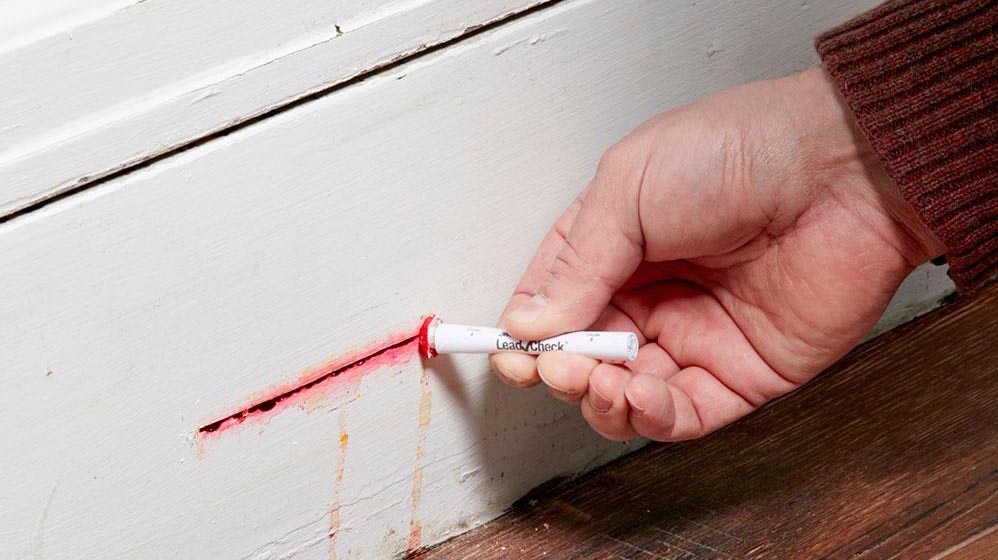If your home was built prior to 1978, there is a chance that lead-based paint was used on the interior and exterior surfaces.
You may have some questions about what this means – for instance “How do I know if my home contains lead-based paint?” or “What do I do if my home does contain lead-based paint?” and “What are the risks for purchasing a home with lead-based paint?” Keep in mind that there are homes purchased every day with lead-based paint and it doesn’t present an imminent health risk. It does, however, mean you should be aware of any paint chips or situations where the paint can become disturbed, and exercise caution during home remodels. Also remember that exposure can happen outside of the home – for instance in schools or other public buildings – or in the soil outside of a home.
Why should I be concerned about the presence of lead-based paint in my home?
Children and pregnant women are the most susceptible to lead exposure. Even small amounts of lead can hurt your child by affecting their nervous system and causing kidney damage. Exposure can also cause learning disabilities; speech, language and behavioral problems; poor muscle control; decreased muscle and bone growth, or hearing damage. High amounts of lead can be even more serious. Adults can also be affected with nervous, digestive, circulatory and digestive system issues.
What are the most common ways that I could be exposed to lead?
Areas in which paint is disturbed (think paint peels, chips, cracking) can be hazardous when a chip is removed and ingested – for instance on a window sill, door jam, or stair banister. Also a big concern is during remodel projects – if old paint is sanded, scraped, sawed through, or otherwise turned to dust, allowing the material to enter the lungs.
Lead can enter the body either through breathing in lead dust, swallowing lead dust that has settled on food and food-prep surfaces, or eating paint chips or soil that contain lead.
How do you know if your home contains lead?
An environmental testing firm can either come to your home and test around the property. This will flag the presence of lead and showing you where the lead is located. You can also send in sample materials to be tested in the lab (a less expensive route).
My home does test positive for lead-based paint – what do I do now?
The answer will depend on your tolerance for the substance in your home. It would be very expensive to totally eliminate the presence of lead-based paint – this involves removing, sealing or enclosing the paint with special materials. A more practical approach would be to take care in watching for paint chips and dust, clean regularly, and in the event of a remodel – using a certified contractor who is trained to address lead hazards safely. Remember – lead-based paint is usually not a hazard if it is in good condition.
What are your legal rights?
When purchasing a home built before 1978, a “Lead-Based Paint Disclosure” form must be signed by both buyer and seller. In this form, the seller discloses any knowledge of lead-based paint in the home. Often times the seller will not know lead is present and are not required to verify. Based on what is disclosed, the buyer can either waive their right to conduct a risk assessment, or ask to conduct a risk assessment – essentially giving them a certain amount of time to have the home tested to their satisfaction. If concerns are raised based on this additional inspection, the buyer can further negotiate with the seller for a remedy, or may terminate the purchase contract.
Simple Steps to Protect Your Family from Lead Hazards:
- Don’t try to remove lead-based paint yourself.
- Only use Licensed Paint Professionals (Check to make sure they are up to date)
- Make sure they give you a “How to Protect your Family Pamphlet or a PDF version”
- Always keep painted surfaces in good condition to minimize deterioration.
- Get your home checked for lead hazards. Find a certified inspector or risk assessor at epa.gov/lead.
- Regularly clean floors, window sills, and other surfaces.
- Take precautions to avoid exposure to lead dust when remodeling.
- When renovating, repairing, or painting, hire only EPA- or state-approved Lead-Safe certified renovation firms.
- Consult your health care provider about testing your children for lead. Your pediatrician can check for lead with a simple blood test.
- Wash children’s hands, bottles, pacifiers, and toys often.

